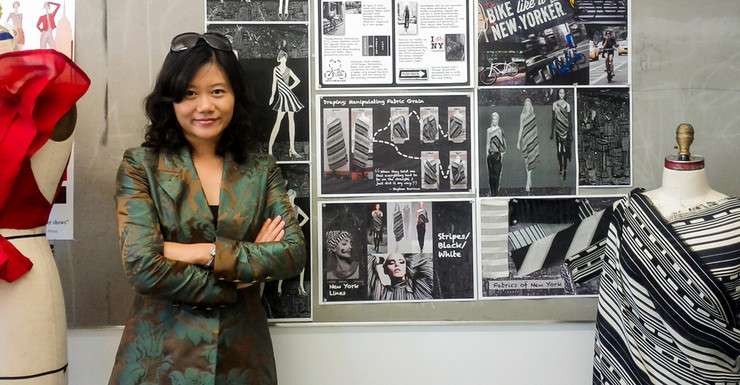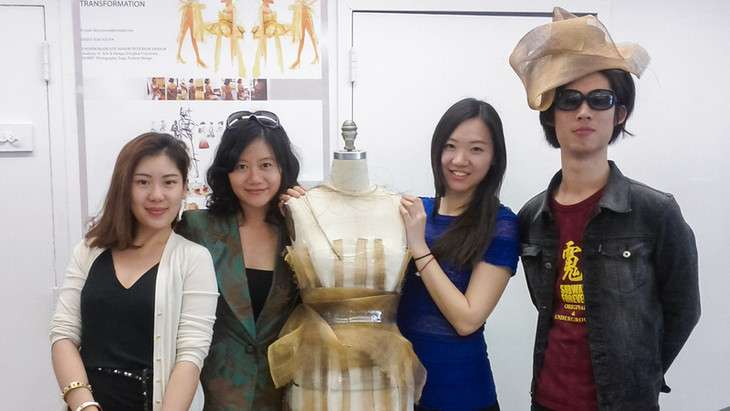Researcher uses technology to predict fashion trends

In fashion, combining contrasting fabrics, colors, and textures is what brings an outfit to life. In Heng Xu's career, combining science and art has brought a new way of interpreting data to life—an innovation that might help consumers understand, follow, and afford tomorrow's fashion trends.
Xu, an associate professor of information sciences and technology at Penn State, is collecting and analyzing data to gain insight into the needs, motivations, and behaviors of the fashion industry, retailers, and consumers. Her ultimate goal is to help the average person follow the often fickle twists and turns of the fashion world.
"Consumers don't always interpret fashion trends as they should," said Xu. "I want to help them digest what is really in style."
Xu has always loved design and how it works both in fashion and in information systems.
As an undergraduate, she studied information systems and also worked as a part-time fashion model. Her modeling career led her to producing runway shows and eventually attending fashion school. She went on to earn her doctorate in information systems from the National University of Singapore and a certificate in fashion design from Nanyang Academy of Fine Arts in Singapore.
"I'm the kind of person who needs to have both sides of my brain working," says Xu. "To think outside the box with my work, I need to be refreshed. Combining the design of information systems and fashion design does that for me."
To help industry outsiders understand fashion do's and don'ts, Xu realized she needed to understand the patterns of trends and how they emerge. She and her research team analyzed fifteen years of data from websites like Style.com, high-end fashion magazines, runway reviews, and major fashion designers' social networking accounts looking for signs of reoccurring interests and themes. The team also monitored department store Twitter accounts and followers' comments.
Xu's colleague, Yilu Zhou, an associate professor of information systems at Fordham University, is assisting her in researching and analyzing the data they've collected.

"It's unusual to see an information system researcher with an expertise in fashion," says Zhou. "Heng has hands-on experience with fashion design, so she can see direct connections between what we've analyzed and what's happening in the fashion industry."
Although much of their research comes from online sources, Xu's initial research inspiration came from Hollywood.
Xu was watching the 2006 movie "The Devil Wears Prada," and a single scene with the film's icy editor-in-chief, played by Meryl Streep, sparked an idea.
"In the scene, Meryl Streep describes how one major designer can use a shade of blue and then another major designer can use it again," says Xu. "Before you know it, all department stores are selling that shade of blue. My team and I were interested in discovering if this type of phenomenon could happen with more than just colors. We wanted to know if the same type of trending could also happen with designs, fabrics, shapes, and patterns."
With social media being such a hot commodity, Xu is looking to such platforms as Twitter for real-time fashion analysis and prediction. She and her team track groups of users who retweet certain tweets and determine whether or not patterns are emerging.
"We can use social media data to identify consumer engagement patterns and predict regional demand," Xu says.
Once Xu and her team complete their findings, they plan to have them available online.
"There will soon be a website to disseminate our discoveries," says Xu. "The site will include an in-depth breakdown of each season's trends, such as specific designers and fabrics that are most popular during that time."
Xu says she wants the site to be user friendly so anyone can search for and understand what was, is, and will be in style.
"To some people, 'fashion' only belongs on the runway," Xu says. "To me, fashion should be wearable and affordable for everyone. That's part of my motivation for this project—giving people the information and resources they need to follow fashion trends by making smarter purchases or remixing what they already own."
Zhou believes their research approach allows Xu to see other points of view, which is critical to the research project. "Xu is a problem solver and is able to see beyond what other researchers see," she says. "I call her the deep thinker on our team."
In Xu's opinion, fashion designers approach design in ways that are fundamentally similar to the approaches used to design information systems—and that's what she wants fashion practitioners to understand.
"People and information are intertwined with fashion design and information design," she explained, adding that in both worlds you need to have users understand the rationale behind the design.
"In the end, people need to understand the information and message you are sending," she says. "It's all about communicating that information so more people can appreciate the beauty of it. As an information system researcher, I work toward designing systems that people can better understand. I view fashion in a similar way. I believe fashion is a form of wearable art that anyone can create if they have access to and understand the information that's available."
Provided by Pennsylvania State University



















